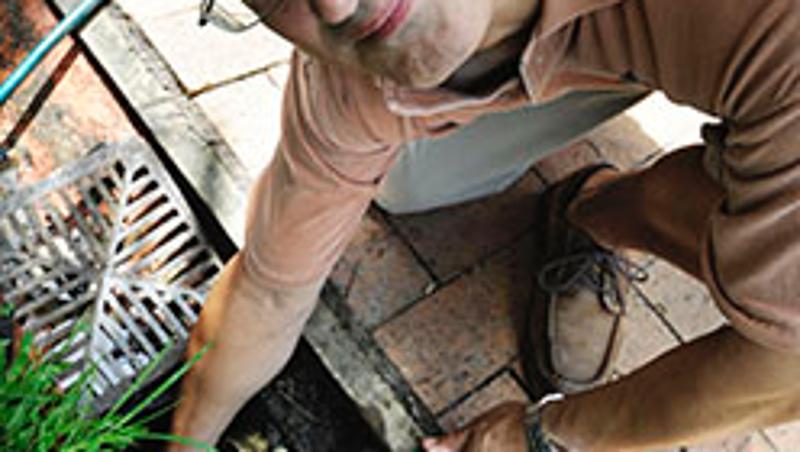
A basic lesson in the use of siphons could provide Queensland homeowners with a cheap solution to flooding as Cyclone Marcia approaches.
QUT astrophysicist Dr Stephen Hughes said a siphon could be made out of a length of any sort of flexible pipe to drain water away after a flood, and could be an easy and cheap alternative to a pump in some cases.
"Weather forecasters say the Queensland coast and south-east is in for cyclonic heavy rainfall over the next few days," Dr Hughes said.
"Some homeowners should be able to use a siphon to drain water away. All that is needed is a flexible tube, even a garden hose would do, but the outlet must be lower that the inlet for the water.
"Another major plus of a siphon is that no power is needed since the energy effectively comes for free from gravity. This could be handy in areas where powerlines are down."
"Think of a siphon as a Christmas candy cane or an umbrella handle. The short side of the cane is immersed in the water at a higher level, for example, flooded backyard, house, car port or basement and the longer side at a lower level to drain the water.
"The greater the height difference, the faster the flow. Flow also is greatly influenced by the diameter of the pipe that you use. For example, doubling the pipe diameter increases the flow rate about 16 times.
"In some cases, a siphon could be used to drain water away while it is raining to prevent flooding."
Dr Hughes said, however, siphons could not solve all flooding problems.
"In some situations a low drainage point would be too far away from a flooded property."
Siphon tips:
•To use gravity, water must be drained from a higher to a lower point, even if the middle of the siphon is higher than either end. The outlet of the siphon tube must be below the upper water level.
•The siphon tube's inlet should be placed at a low point in the floodwater so that as water drains away, more water flows into the low point.
•To increase the flow: position the tube's outlet at the lowest point possible, and use the widest tube available.
•Prime the siphon tube to start the flow by blocking one end and using a funnel at the other to pour water down the tube. If the siphon is working, water will keep flowing out of the other end and when you put a finger over the inlet you will feel the suction.
•A siphon can raise water up to 10m before descending to the draining point. Siphons can transport water over a long distance as long as the height difference is sufficient to overcome friction losses on the way.
Dr Hughes is happy to do a demonstration at this home at today has placed further information on siphons for drainage, including diagrams, photos and videos at http://eprints.qut.edu.au/39120.
Media contact: Niki Widdowson, QUT media officer, 07 3138 1841 or Rose Trapnell, QUT media team leader rose.trapnell@qut.edu.au, 07 3138 2361 or 0407 585 901.




